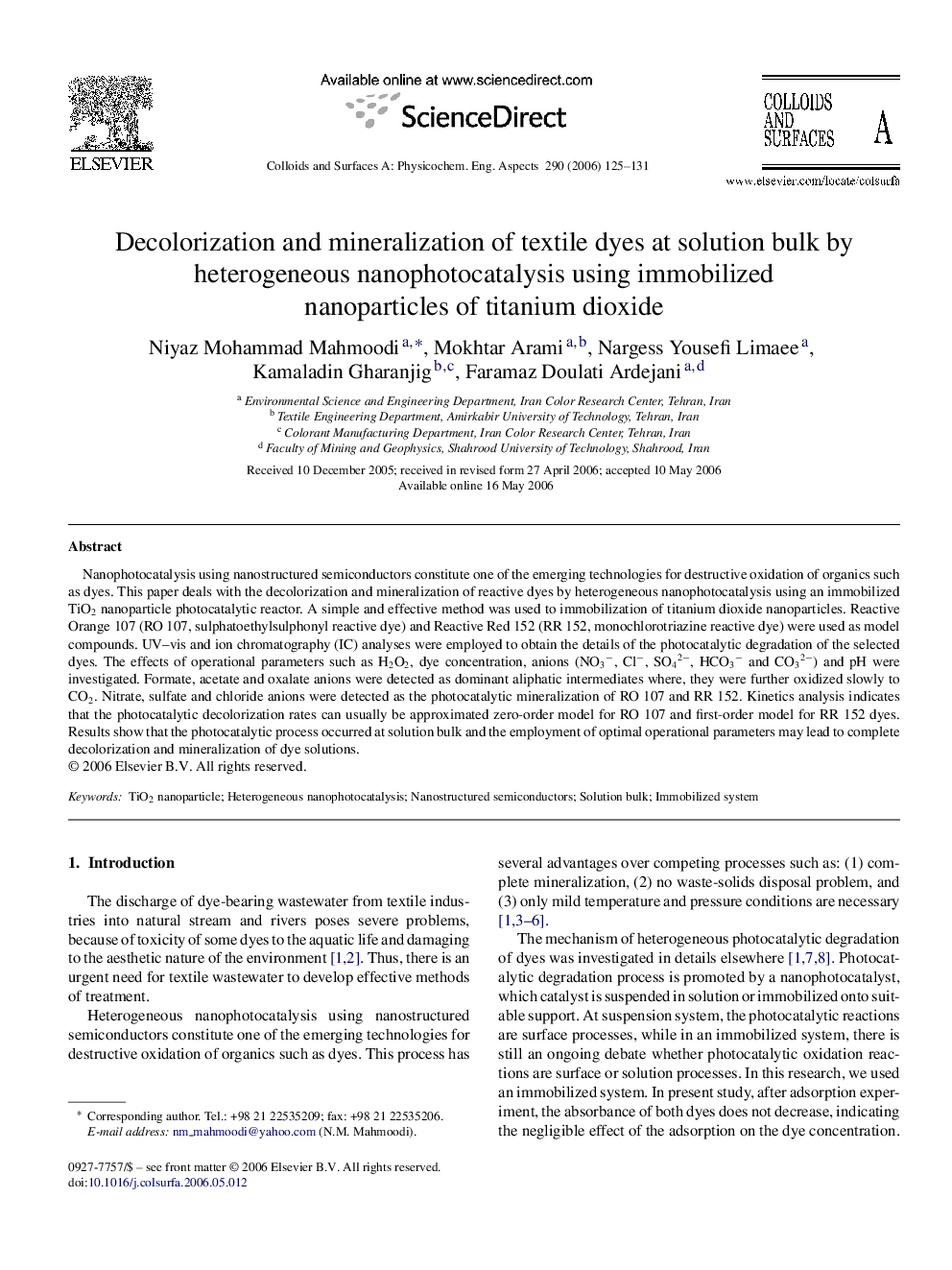| Article ID | Journal | Published Year | Pages | File Type |
|---|---|---|---|---|
| 597793 | Colloids and Surfaces A: Physicochemical and Engineering Aspects | 2006 | 7 Pages |
Abstract
Nanophotocatalysis using nanostructured semiconductors constitute one of the emerging technologies for destructive oxidation of organics such as dyes. This paper deals with the decolorization and mineralization of reactive dyes by heterogeneous nanophotocatalysis using an immobilized TiO2 nanoparticle photocatalytic reactor. A simple and effective method was used to immobilization of titanium dioxide nanoparticles. Reactive Orange 107 (RO 107, sulphatoethylsulphonyl reactive dye) and Reactive Red 152 (RR 152, monochlorotriazine reactive dye) were used as model compounds. UV-vis and ion chromatography (IC) analyses were employed to obtain the details of the photocatalytic degradation of the selected dyes. The effects of operational parameters such as H2O2, dye concentration, anions (NO3â, Clâ, SO42â, HCO3â and CO32â) and pH were investigated. Formate, acetate and oxalate anions were detected as dominant aliphatic intermediates where, they were further oxidized slowly to CO2. Nitrate, sulfate and chloride anions were detected as the photocatalytic mineralization of RO 107 and RR 152. Kinetics analysis indicates that the photocatalytic decolorization rates can usually be approximated zero-order model for RO 107 and first-order model for RR 152 dyes. Results show that the photocatalytic process occurred at solution bulk and the employment of optimal operational parameters may lead to complete decolorization and mineralization of dye solutions.
Related Topics
Physical Sciences and Engineering
Chemical Engineering
Colloid and Surface Chemistry
Authors
Niyaz Mohammad Mahmoodi, Mokhtar Arami, Nargess Yousefi Limaee, Kamaladin Gharanjig, Faramaz Doulati Ardejani,
